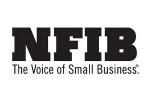WASHINGTON — When it comes to starting or expanding any business, especially with small- to medium-sized companies, capital needs to be secured, and that often means going to the bank for a loan. While the ultimate decision of whether or not to issue the load remains with the bank, there are things owners and potential owners can do to better make their case.
This was the message of Joseph W. Major, chair and CEO of The Victory Bank and Victory Bancorp, Inc. in Limerick, Pennsylvania, near Philadelphia. Major offered his counsel during a recent webinar — “Small Business Loans and Financing — A Banker’s Expert Advice” — sponsored by the National Federation of Independent Business (NFIB).
Finding the Right Financial Partner
While multi-billion dollar banks offer services that small banks cannot, Major says, many small and start-up businesses would do better looking at smaller financial institutions for a number of different reasons.
“At our bank, at least the way we operate, is that we get to actually know you,” he says. “Every single loan we do is a custom, underwritten, relationship-based loan. We come to your place of business, we walk around and we understand the story. Of course, we review several years of financials, tax returns and such to get a sense of whether or not your business is doing well, and does the loan you’re seeking make sense.”
Part of the benefit of this type of relationship with a financial institution is that solutions can come quicker when they are necessary.
“I don’t care what business you’re in and what bank you’re dealing with,” Major says, “something’s going to go wrong. Some of your projections are going to be bad. A piece of equipment is going to fail. In fact, we often joke about it that that all businesses really do every day is solve problems — their own and their customers —all day long. At our bank and any small bank, you can call us. We answer the telephone. We don’t allow voicemail at our bank. So, if you call us during business hours, somebody answers the telephone, and we will give you an answer. You don’t want to get lost in some deep email or voicemail canyon. We’ll solve the problem.”
The other benefit to getting face-to-face time with the bank is that the borrower gets an outside view of their proposed business plan.
“When you’re dealing with a bank, a lot of times the borrower doesn’t know exactly what they want,” Major says. “If we’re doing our job correctly, we get to know you and understand your business, and we will help you structure your borrowing and your deposit products in a way that is in your best interest. You have to develop trust with us in order to believe that we’re going to actually do that. If you treat your customers that way and take care of them like they were your own brother or sister or grandmother, in the long run, the bank will do well, and the clients will do well.”
Preparing to Apply
Major stresses that, in order to get a loan, the bank requires information, and if the potential borrower comes with what the bank needs, it increases the likelihood of a completed deal.
“You have to look at it as a series of steps, rather than just one big thing at once,” he says. “I think an in-person meeting is the way to go, and I would call it a preliminary meeting. You might come to a bank like ours, sit down with the banker and say, ‘I think I need some new equipment,’ ‘I want to buy a building,’ ‘I’m running out of working capital, I need to have a line of credit’ or whatever. Then, we’re going to ask you some questions — we’re going to get a basic idea of what it is you need. That’s the preliminary meeting, but it will give you some direction.”
The next step is to gather the information the banker needs, “and that’s the part where most of our prospective clients really fall down,” Major says. “This is the weak link in the whole process.”
Major has found that there are common issues with this process for people coming in for loans.
“First, they’re not used to writing a detailed business plan,” he says, “and often they’re dependent upon other people, like their accountant or their lawyer or their mother-in-law who does the books, to get the stuff together.”
A clear business plan in writing is crucial for the process, Major says, but has found that many potential business owners are hesitant around this step.
“It doesn’t need to be 500 pages long,” he says, “and It doesn’t need to be complicated, but it should say, ‘Here’s what our business looks like today, or here’s what it will look like after we open it. Here’s how it’s going to run. Here’s the revenue. Here are the expenses. Here’s the bottom line,’ and so forth.”
A narrative is key for the bank to make business sense for the loan.
“That narrative is a basic explanation as to what this business does, how it makes money, what the risks are associated with that business and what’s being done to manage all that,” Major says. “People get really intimidated by this, but often these are only a few pages long. And for the benefit of the banker, you don’t want it to be 500 pages long, or even 100 pages long. You want it to be concise and right to the point.”
Major believes that If the potential borrower cannot come up with a concise, organized business plan in place, this is a red flag for the bank.
“It says that you may not even understand your own business,” he says. “This is just a hope and a prayer. It’s not likely that the bank will get paid back. So, it’s your job as the borrower to present a case that says this is a good loan, and there’s no better way to do it than to do it in writing.”
While this process might take time, Major says is the best way to get the funding.
“It’s work,” he says. “It can be frustrating, and it can be overwhelming, but when you’re done, when you’ve written it and it’s complete and you’re satisfied with it, it’s a powerful tool, and it also makes you, the entrepreneur, kind of bulletproof.”
Come back Tuesday for Part 2, where we’ll dive into some of the most popular types of loans for small businesses.
Have a question or comment? E-mail our editor Dave Davis at [email protected].



















































